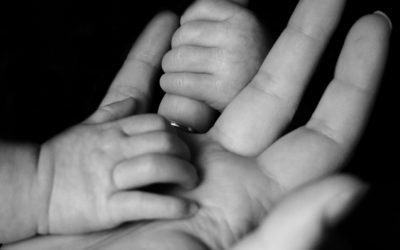Deconstructing Choice & Throwness
This is the last of my trilogy that explores choice and throwness in relation to their influence on RGT. I explicate some constructs of two existential thinkers, Martin Heidegger (a German philosopher) and Jean-Paul Sartre (French philosopher), that influenced Gestalt Therapy. Heidegger, as well as Sartre, sought to illuminate the concepts of throwness, choice, being, freedom and responsibility in relation to existential anxieties.
Existential philosophy is fairly intangible to comprehend in the first reading; sometimes subsequent readings can also leave one feeling frustratingly fascinated, at least that has been my experience. Yet I try to make meaning of it, in my way. One simple way of explaining choice and throwness is by relating a recent event in my chiefly mundane existence. I had finished writing this article, yet not finalised. Around two weeks ago, a Saturday night, I kept my laptop on my bedside table and got down to use the restroom (often when I am writing or reading, my biological urges for food, emptying my bladder, contact with other etc., recede into the background and knocks on my consciousness door frantically before I give that awareness its due). So I got down, tripped over the wire, laptop fell and I lost all my data: a gestalten nightmare. I spent some valuable time reflecting on how I feel like the ‘laptop’, as the ‘wire’, as the ‘lost data’, I even dialogued with my bladder: hope and despair. It was an unexpected, random event which I really had no choice or control over. Throwness- karma. Once, years ago, my laptop crashed and I lost all my data, after which I started creating back-ups. 2014 was the last back up I created. Choice. I had the agency to continue being meticulous, yet I got humanely complacent there.
One does not choose one’s parents, gender, region, country, history, tradition and culture (Jacobs, PGI residential, 2017). One cannot exercise agency at the time of birth or with the inevitability of death. Yet one has agency in choosing to live life with freedom and responsibility. Heidegger’s Dasein (1962), is ‘a mortal being stretching between birth and death’, and thrown into its world and all its possibilities. The being has no choice at birth; however, the human being is not just defined by being thrown into the world. Even though birth and death is the irrevocable part of being, within this we have possibilities that open up for us. To quote Heidegger:
“Anyone can achieve their fullest potential, who we are might be predetermined, but the path we follow is always of our own choosing. We should never allow our fears or the expectations of others to set the frontiers of our destiny. Your destiny can’t be changed but it can be challenged”.
Lynne Jacobs (PGI, Residential 2017) shared a poignant story which illuminates this concept with simplicity and strength. This is the story of a ballerina who is awaiting her death outside the gas chamber along with other Jewish women during the Holocaust. A guard recognises her and asks her to dance for him. She dances up to him and kicks him in the neck and as a result, she is shot down. Although for the ballerina death was inevitable, she chose the way she would die.
This is also akin to Sartre’s (1956) concept of human choices embedded in existential limitations; to be “with-in” or “without-out” focused. He said that when one has witnessed the tragedy of war and suffering of survivors one does not have the luxury of feeling existential angst or what he called ‘nausea’. It’s important and valuable to look “with-in”, immerse oneself in one’s own suffering, gain awareness into how that continues to impact the way we think, feel and behave. It’s equally important to look “with-out” and gain an understanding of the possibilities we have and engage with becoming a socially productive being. This probably would attune us to our individual responsibility and freedom.
Applied to RGT these existential concepts help us to engage with our clients in helping them gain awareness into both their throwness as well as agency. Exploring the ‘adjacent possible’ through mutual dialogue. We must exercise caution with each client because we need to be aware of the cultural context within which client’s distress in entrenched, a lack in this can lead to therapeutic rupture, which again is inevitable. However, to recognise this and engage in a dialogue with the client creates the space for humbly acknowledging the vulnerability of being human and being flawed. For this kind of approach to be effective first and foremost, as a therapist we need to immerse in understanding our own throwness and choice, this can happen only through dedicated personal therapy and supervision. A process of becoming aware of one’s agency, as well as limitations as a being, therefore as a therapist.
A story to illustrate the concepts of throwness and agency:
The apple of my eye…Kanmani
Once upon a time in a small town in South India, lived a young, poor, Brahmin couple. Their marriage was arranged based on the match of the horoscope, checked by their respective families, although there were rumours in the village that the astrologer was paid to align the unfortunate stars. The wife, Uma was unhappy with her husband; she could not fathom her unhappiness. The husband Ramanan was often lost, sad, and unhappy in his marriage, he couldn’t fathom his melancholy.
As time passed, Uma gave birth to a lovely girl, yet no one celebrated this blessing of God, Uma did not dance in joy nor Ramanan and certainly, no ‘ladoos’ (an Indian sweet) were distributed. The firstborn a girl was not a good omen, especially for this couple, in this Brahmin community, in this small town- a non-existent dot, in the South of India. Nevertheless, they named her Kanmani- the apple of my eye. Soon, a male child was born and this time there were ladoos distributed and Uma rejoiced in her re-established position in the social system. I am not sure what exactly was the reason; you see I am no longer omniscient, but when Kanmani was four years old or so, Ramanan left home forever. There were rumours Kanmani heard from her maternal uncle that her father was impotent, that both the children were not fathered by him. The little girl couldn’t make sense of this and I think it left her feeling rootless…confused…
I don’t know if Uma loved her daughter, maybe she did, however, in this town, in this community, girls were not very welcome. Boys were raised with great indulgence, showered often with toys, gifts and the best of food. Kanmani watched all this with open-eyed puzzlement and bereft wonder. When her mother hit her, shouted at her and forgot to braid her hair and give her food, she struggled to make sense of her world. When she saw her brother getting hugged, laughed, joked with and fed lovingly, Kanmani sensed something amiss but she couldn’t make meaning in her tiny vast mind, in this tiny little community, in this tiny little town. Kanmani went to school, she was a bright little star, she did excellent academically, yet she couldn’t make friends, girls laughed at her and boys found her strange. Her hair was often ill-kept and her clothes shabby. I think she felt strange, excluded, different…wanting to belong…
She managed to survive…
A lot happened to her that I wish I had time to tell you, pity, I cut a long story short; suffice to say that she was witness to the loss of her father, loss of her childhood, physical neglect, emotional and sexual abuse and her mother’s painful relationships with other men after Ramanan left. When Kanmani was 14 her mother died in a tragic accident and she was raised by her maternal grandmother and uncle’s family. Or maybe it’s better to say she raised herself? She had to finish the housework and send herself and her brother to school as compensation for being given a home…growing old overnight…I think this left her feeling lonely, scared…wanting to belong…
When Kanmani came to me, she was 29 years old, had two daughters aged 4 and 2, a husband and in-laws with whom she lived. Two years prior to meeting me, Kanmani had been to a psychiatrist and was diagnosed with a split personality; according to her, he put her in a hypnotic trance to help her overcome an infatuation with a man. This romantic relationship was terminated after a painfully unpleasant incident in which her husband, her uncle and brother were involved. She was in a relationship with another young man when she met me; she felt he was her soul mate. A decade I have known her now, a decade went past how…rootless, searching, excluded, not belonging…testing…belonging painfully…
Over the many years of our work together she told me how she hated women, how she was relieved when her mother died and how she at times wanted to throttle me. She also told me that I am actually her soul mother. In one session where she was crying and I offered her tissue paper, she told me she didn’t want my damn tissue paper, that I was distant, unavailable and critical. One day, three years ago, I was walking to an auto stand and she passed by on her bike, she offered me a lift, at first I refused, then I accepted with thoughtful grace. In the following session, she told me she felt sad going over the bumps on the road, the first time she wished she had a car so that I would be comfortable…
Thrown into this world that was incomprehensible she continues her tentative journey of trust, tiny tiny steps over a decade…

Gestaltan Lives
Four Horsemen of Apocalypse and Antidote for Couples
Improving our relationship requires an ability to comprehend the subjective experience of ourselves
Dependency and Relationality
A question that often crops up in my training sessions, especially so when I teach the Post Graduate Students
Complexity of a Therapist’s Grief
Our profession is an unusual one or so I believe, we are bound by ethical guidelines for our



